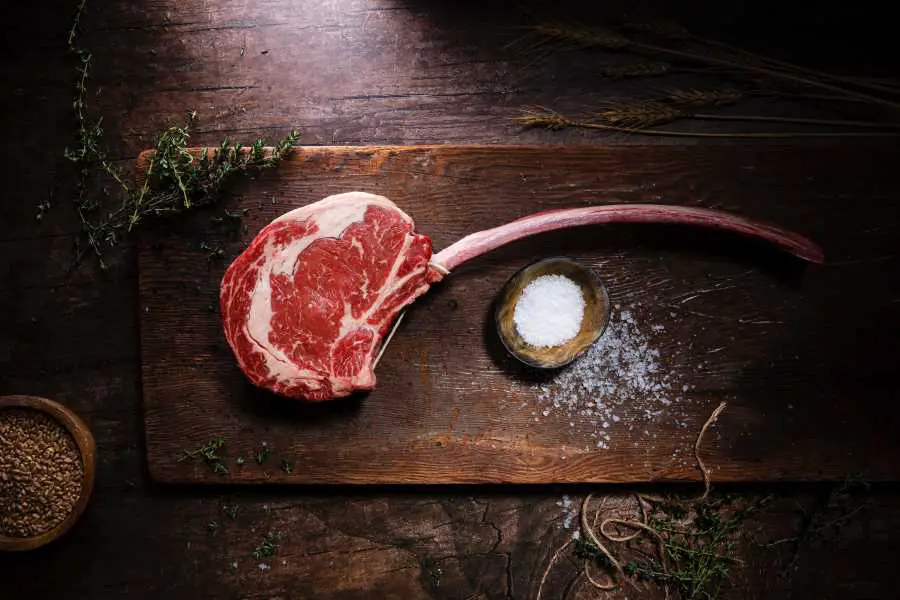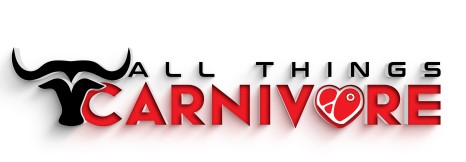
On this page, you will find many free printables on All Things Carnivore for your personal use. They are PRINT FRIENDLY and there are many options in each group for you to choose from. If you have any issues or comments on these printables, please let us know.
Contents
- Carnivore shopping lists
- Carnivore recipes
- Carnivore meal plans
- Carnivore diet information
- Starting the carnivore diet
- Weight loss
- Fasting on the carnivore diet
1. Carnivore shopping lists
For more information on different versions of the carnivore diet and what foods you can eat, please read this post.
2. Carnivore recipes
There are more carnivore recipes that you can check out here.
3. Sample carnivore meal plans
You seriously don’t need meal plans when on the carnivore diet. You will learn to eat intuitively like all other animals that live in their natural environment. All you need to do is to follow the healthy eating principles below which mimic the way our ancestors ate:
- Eat from a wide variety of animal sources to ensure sufficient nutrients. Eat meat (beef, lamb, goat, bison, pork, chicken), seafood, eggs, bone marrow, bone broth, organ meat, butter, cream, yogurt, and tallow.
- Eat nose-to-tail or as many different parts of an animal as possible. Eating this way will minimize waste while ensuring you have all the necessary materials you need to build a perfectly healthy human body
- Eat from naturally or well-raised animals as much as you can afford (e.g. grass-fed ruminants and pasture-raised pork and chicken)
- Eat unprocessed or minimally processed foods to preserve nutrients and minimize additives
- Eat both cooked and raw if it’s safe and you can tolerate because some nutrients can be destroyed due to prolonged cooking.
Below are some sample meal plans so that you have an idea of what a week of carnivore diet foods may look like.
Sample weekly meal plans
Blank weekly meal plans
These blank templates are for you to create your own weekly meal plan.
4. Carnivore diet information
Vitamin C on the carnivore diet
Due to the vital role that vitamin C plays in the proper functioning of the human body, vitamin C deficiency can result in serious complications. Below is a summary of sources of vitamin C on the carnivore diet. For more in-depth information on vitamin C and the carnivore diet, please read this post.
Calcium on the carnivore diet
Calcium is important because it is needed for many bodily functions and is used as the main material for teeth and bone formation. However, there is very little amount of calcium in meat. The summary below shows you what the rich sources of calcium on the carnivore diet are to ensure you regularly get enough calcium for your body’s needs. For further information on calcium sources on the carnivore diet, please read this post.
Pros and cons of the carnivore diet
I’ve written in detail about the pros and cons of the carnivore diet in this post. Below is a short summary:
5. Starting the carnivore diet
Habit Tracker
John Maxwell once said, “You will never change your life until you change something you do daily. The secret of your success is found in your daily routine“. If you would like to switch to a healthier diet and make it a lifestyle, you need to work on it daily until it becomes a habit.
Using a habit tracker can help you keep track of your progress, visualize how far you have to go, motivate you along the way and celebrate your milestones.
Below are three habit trackers of various lengths that you can download and start using from the very beginning of your experiment with the carnivore diet.
Food Diary
Below is a food diary to help you track your fat-to-protein ratio for one week to help you find the best fat-to-protein ratio for you.
Below is a food diary to help you track your DAILY CALORIE INTAKE for one week to help you figure out how much you should eat on the carnivore diet.
6. Weight loss
Food and physical activity diaries
Many people have successfully lost weight and improved their health on the carnivore diet. However, if you find that you are not losing weight as you had hoped, as I wrote in this post, there are a few things you can do to help you achieve your weight loss goal after you’ve fully adapted to the carnivore diet.
You can’t manage what you don’t measure, and two things you can do to help with your weight loss goals are to keep a food diary and a physical activity diary for one week.
Once you’ve got the information on your food intake and physical activities for one week, you can identify areas of improvement, set your goals, and develop a plan of action.
Below is a 7-Day Food Diary that you can print out and note down your food intake for one week. If you have trouble figuring out the fat and protein quantity in grams, please check out this website which has an extensive nutritional database.
There is space toward the end of the diary where you can identify areas of improvement (what food should be eliminated, whether you should lower your fat intake, whether you should reduce meal frequency, whether you should eat earlier etc.).
You can then put forward an action plan. Gradually but consistently is the key to success. For example, if you’ve been eating 3 meals a day plus snacks, set one goal that is to eat 2 meals a day to satiety and no snack in between meals. After you’ve nailed this goal and two meals a day become a daily habit, set the next goal.
Below is a 7-Day Physical Activity Diary that you can use to “audit” your lifestyle and see how active or sedentary you are.
There is also space toward the end of the form where you can identify gaps (times of the days when you have been sedentary and can incorporate moderate to intense physical activity), set goals, and develop an action plan.
Perceived Stress Scale
In addition to diet and exercise, your stress level can impact your waistline. Chronic stress means consistently elevated stress hormone cortisol which can result in weight gain and have other adverse health implications.
Perceived Stress Scale is a classic stress assessment instrument developed by Sheldon Cohen, Tom Kamarck and Robin Mermelstein in 1983 and is widely used in assessing stress perception in academic studies as well as practical applications.
In addition to Perceived Stress Scale, you can assess your stress, anxiety and depression levels using the following free online tools:
- Depression and anxiety self-assessment quiz. This is an online tool available for free on NHS website. There are 18 questions in total and you will be given instant scores for depression and anxiety by the end of the survey and are directed to seek appropriate support
- Take-a-Test Tool to check your levels of stress, anxiety, and depression. This is an online tool developed by thiswayup.org.au, a non-profit organization. There are 10 initial questions which will give you a stress score. You have the option to complete all 41 questions in total to get depression and anxiety scores and be directed to some free wellbeing online courses.
If you find that your stress level is high, please check out this post for some strategies to lower your stress and support your weight loss goal as well as improve your general well-being.
7. Fasting on the carnivore diet
Below is a 7-Day Fasting Workbook which has everything you need to start a long fast.
If you haven’t already, please check out this In-Depth Guide to Water Fasting on the Carnivore Diet before proceeding.
More free printables coming soon!
Disclaimer: The information in this post is for reference purposes only and is not intended to constitute or replace professional medical advice. Please consult a qualified medical professional before making any changes to your diet or lifestyle. Please check out our disclaimer for more detail.
